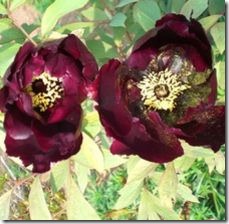The tulip tree, Liriodendron tulipifera, is related to the magnolia and is also called the yellow poplar, white poplar and whitewood. It is a hardwood tree that is valued for its excellent wood that is used for furniture. The tulip tree is also a value to the environment because it provides a food source for wildlife and shade. The oldest tulip trees can be found at heights of about 60 feet, but the usual height is around 30 feet. If allowed to age naturally, tulip trees can grow for over 200 years.
Climate
-
Tulip trees can withstand extremes in temperatures, but tend to grow in topographical areas where they are somewhat protected from the elements. In areas where the winter temperatures drop below freezing, they will grow in valleys where the temperatures are a bit warmer. In regions where there is not much rainfall, the tulip tree will grow along stream banks or even in bed of the stream or creek, or on slopes that receive more rain. The tree is generally found in the southern states like Tennessee, North Carolina and Kentucky, but in states like Georgia that are very hot in the summer, the trees are limited to moister areas like along streams where they can get enough water from the soil.
Soil Requirements
-
The tulip tree does well in different types of soil, but they thrive best in alluvial soil, which is soil found near water sources like streams or creeks. The tulip trees will also survive very well in moist soil that contains gravel, which helps with drainage. The worst type of soils for the tulip tree is soil that does not drain well and is boggy or very dry, high clay content and compacted soil. If soil does not have a sufficient amount of nitrogen and other nutrients, the growth of the tulip tree will be inhibited.
Reproduction
-
The flowers of the tulip tree have six petals that can be many different colors including a yellow, orange or purple. Depending on the climatic conditions, the trees will generally produce flowers between April and June. They produce flowers for several weeks, but each flower has to get pollinated very soon once it opens, within a day, because once the stigma turns brown, the flower is no longer fertile. The fruit containing the seeds is like a cone a couple of inches long. The seeds have wings for dispersal and will float down and away from the tree once the cone opens.
Growth Conditions
-
Tulip trees do not like too much shade, but because they grow fast in good conditions, they will easily grow tall enough to escape most shade and become a dominate upper story species. It has the ability to resist crowding out by other species that might otherwise compete with it for space and nutrients or water. Tulip trees will space and regulate themselves so that their canopies or crowns are not overlapping or too dense. They do this by slowing their growth rate after about 20 years.
Pests
-
Not many pests harm a tulip tree, although there are some that can cause slight damage. These include the tulip tree scale, the yellow poplar weevil, the root collar borer and the Colombian timber beetle. Unless there is a severe infestation, the tree will recover from any leaf, bud or root damage and continue to grow. There are fungi that will attack cut wood of the tulip tree, but this only occurs during warm weather and if the logs have been left on the ground too long.


Deprecated: strpos(): Passing null to parameter #1 ($haystack) of type string is deprecated in /home/agriviek8Qv/agriviet.net/public_html/wp-includes/comment-template.php on line 2522